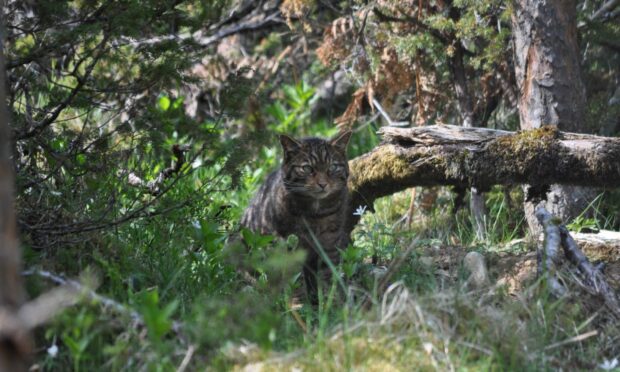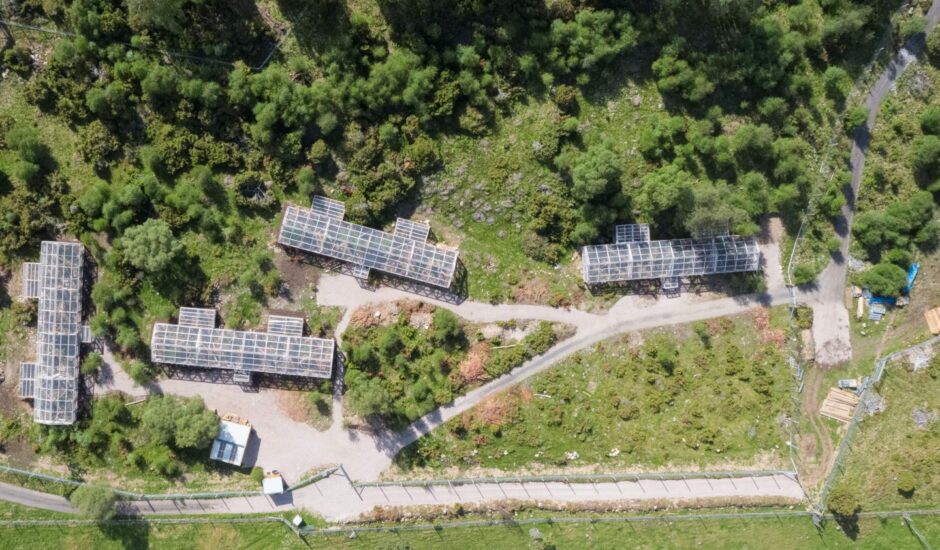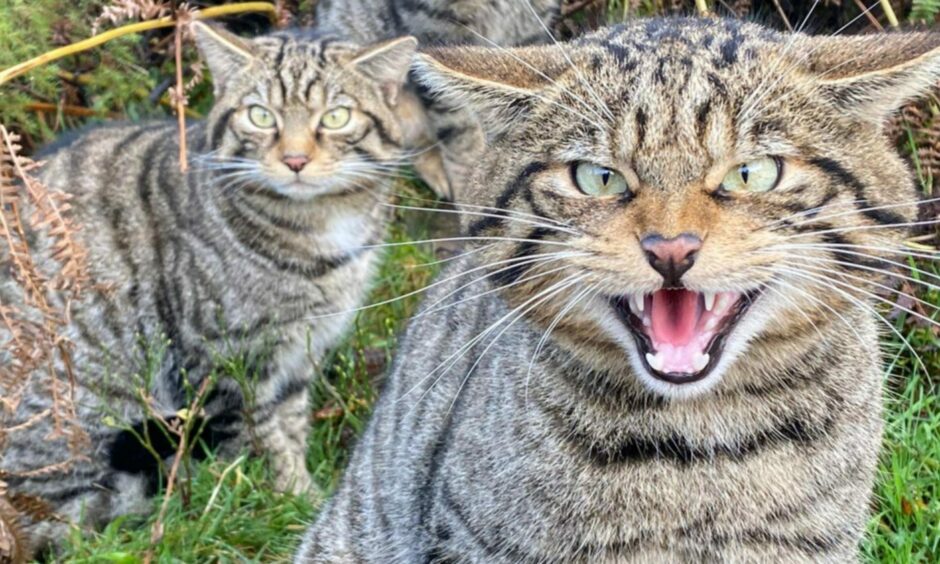After years of preparation, 22 Scottish wildcats have been released back into the wild.
The Saving Wildcats partnership, led by the Royal Zoological Society of Scotland (RZSS), has released the rare species at undisclosed locations across the Cairngorms this week.
It is being hailed as a “historic step” in bringing them back from extinction.
While the wildcats are free to roam the Cairngorms Connect landscape within the Cairngorms National Park, they will be monitored using GPS collars.
Following approval from NatureScot earlier this year, the project will release up to 60 wildcats in the next three years.
It also allows the team to study wildcat behaviour further as the animals navigate their wild surroundings.
David Field, chairman of the Saving Wildcats project board, said: “We are delighted that the Saving Wildcats partnership has taken this historic step towards securing a future for the species in Scotland.
“The time is now to give the ‘highland tiger’ the best chance of survival, and I am thankful for the work of our team members, partners and supporters in making this happen.”
Since their birth in 2022, the wildcats have been held at the Highland Wildlife Park near Kingussie as keepers prepared them for life out in the wild.
Several organisations have been involved in the release, with Forestry and Land Scotland creating a mosaic of interconnected habitats within the Cairngorms.
NatureScot chief executive Francesca Osowska said Scotland had a good track record in successfully translocating species, allowing them to thrive in their new habitats.
These include golden eagles, white-tailed eagles and beavers but challenges face the wildcats as they establish themselves in the wild.
Dr Helen Senn, head of science and conservation programmes at the RZSS, said: “We hope that this project will pave the way for the full recovery of Scotland’s last remaining native cat species.
“Unfortunately, life is tough for wild carnivores and the sad reality is that some of the wildcats that we release will not survive due to threats such as road traffic. Their survival is contingent on their individual behaviour in a new environment.
“While the Saving Wildcats team have made every effort to prepare the wildcats by moving them into large pre-release enclosures which support natural development, informed by other successful carnivore recovery projects such as Iberian lynx in Spain and Portugal, they cannot ultimately control how the cats will react.
“However, we also know that inaction will result in extinction.
“As human activity is responsible for the wildcat’s decline, we have a responsibility to take action now to protect one of our rarest and most threatened mammals.”


